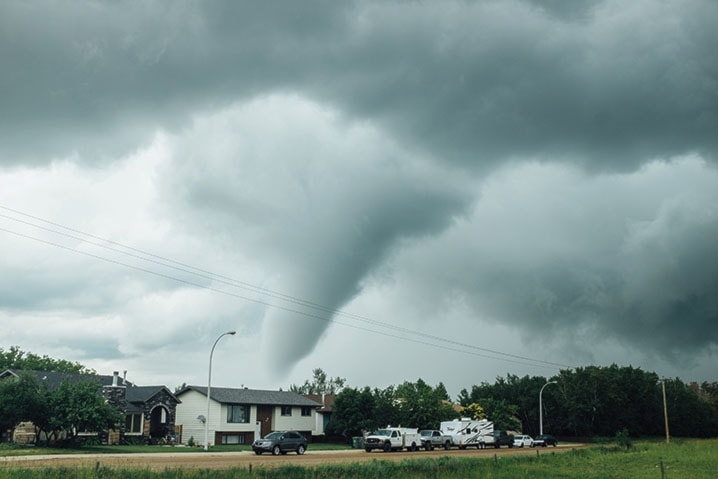Alberta is disaster central when it comes to an increase in severe weather events, which are the impact of a changing climate, according to an insurance industry spokesman.
And Red Deer sits in the midst of this volatile weather, said Bill Adams, vice-president Western and Pacific, with the Insurance Bureau of Canada (IBC).
Although the bureau doesn’t break down the insurance damage numbers for specific areas, it has determined that $50 million in insured damage occurred earlier this summer from a storm system that included parts of Central Alberta.
A warm humid air mass in late June caused severe storms — including a small tornado near the Ponoka Stampede — that ran from Alberta to Manitoba.
The majority of damages occurred in Alberta, said Adams, who is based in Edmonton. The IBC represents the majority of home, auto and business insurance companies in Canada.
When they look at all natural catastrophe claims in Canada over the last six or seven years, about 60 per cent come out of Alberta, he said.
“Alberta by far and away is feeling the brunt of Mother Nature’s wrath, and the impacts of severe weather being driven largely by our changing climate.”
Climate change is a global issue and Canada as a whole is not immune from it, he said. “We’re seeing that right across this country, but nowhere more so than in Alberta.”
From a claims perspective, the Fort McMurray wildfire is the single largest insured natural disaster in Canadian history, Adams said. While the amount of insurance claims is still being tallied, some estimates put it as high $6 billion.
The Southern Alberta flooding in 2013 was about $1.7 billion in insured damages.
“We’ve always had wildfires. We’ve always had rainstorms. We’ve always had hail storms. The reality is that the long-term trends are not encouraging because they are all increasing both with the frequency and the severity.”
“While you can’t tie any one event to the broader climate discussion, it’s very clear that the trends in our changing climate are having a direct impact in the trends that we are seeing in these severe weather events,” Adams said.
From an industry whose purpose is to mitigate risk and to transfer risk from individuals and businesses to insurance companies, obviously the IBC measures things to determine long-term trends and the source of those trends, he said.
“We’re not climatologists. … We’re risk managers but we also contribute to research to understand what’s ultimately driving risk in Canada.
“And it’s very clear from our research that the frequency and the severity of these events is tied to our changing climate.”
Many Canadians don’t regard Mother Nature as a threat to them but it’s wise to consider what’s taking place and think about things they could do to lower that risk, Adams said.
Water is one of the key risks that are driving insurance claims. Something as simple as back-flow preventers, that help stop basement flooding, can help, he said.
“It’s raining more cats and dogs, more often,” said Adams, who said the 2013 flooding was a wake-up call for the insurance industry, which began to ask itself if there was a better way to provide protection for Canadians.
Some insurance companies have since begun to offer policies with overland flood coverage, he said.
barr@www.reddeeradvocate.com
